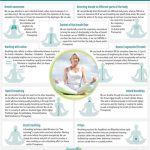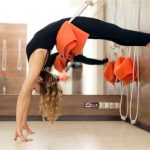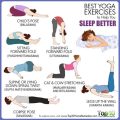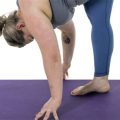Mastering Easy Yoga Breathing Techniques for Stress-Free Busy Days
Introduction
In a world that moves at lightning speed, finding time to unwind can seem impossible. However, simple yoga breathing techniques—often referred to as pranayama—can offer a quick yet effective solution to relieve stress, boost mental clarity, and enhance physical well-being. These techniques fit effortlessly into even the busiest of schedules, empowering individuals to manage stress, stay present, and improve focus. But what exactly makes these breathing methods so effective, and how can they be integrated into daily life? This article dives into the science and practice behind easy yoga breathing and explores practical ways to incorporate these techniques into your routine.
Key Concepts
- Pranayama: Ancient yogic breathing techniques focused on controlling the breath to enhance physical and mental well-being.
- Mindful Breathing: Paying deliberate attention to your breath to reduce stress and promote relaxation.
- Sympathetic vs. Parasympathetic Response: Yoga breathing activates the parasympathetic nervous system, helping the body relax.
Historical Context
The practice of pranayama dates back thousands of years to ancient India, where it was a key component of the yogic tradition. Historically, it was believed that controlling the breath could unlock spiritual growth and physical health. Over time, various types of pranayama evolved, such as Nadi Shodhana (alternate nostril breathing) and Ujjayi (victorious breath). Though originally linked with meditation and spiritual practice, modern adaptations of pranayama have become widely accessible and used for therapeutic purposes.
Current State Analysis
In recent years, yoga breathing techniques have gained traction not only in wellness communities but also among health professionals. Studies have shown that regular breathing exercises can significantly reduce cortisol levels, improve heart rate variability, and enhance emotional regulation. Despite the benefits, time constraints remain a common barrier, particularly for busy professionals. This has led to the popularity of simplified practices that require just a few minutes a day.
Practical Applications
- Box Breathing: Inhale for 4 seconds, hold for 4, exhale for 4, and hold for 4.
- Nadi Shodhana: Alternately close off nostrils while inhaling and exhaling.
- 4-7-8 Technique: Inhale for 4 seconds, hold for 7, exhale for 8 seconds.
- Ujjayi Breath: Inhale deeply through the nose, slightly constrict the throat, and exhale audibly.
Case Studies
| Case Study | Method Used | Outcome |
|---|---|---|
| Corporate Employee Stress Reduction Program | Box Breathing | Participants reported a 40% reduction in stress levels within 4 weeks. |
| Students Preparing for Exams | 4-7-8 Technique | Students experienced improved concentration and reduced anxiety. |
| Therapeutic Intervention for Insomnia | Ujjayi Breath | Subjects fell asleep 30% faster after 2 weeks of practice. |
Stakeholder Analysis
- Employees: Gain tools to manage workplace stress efficiently.
- Students: Benefit from enhanced focus during studies.
- Health Professionals: Integrate breathing techniques into therapy plans for stress-related conditions.
Implementation Guidelines
Introducing yoga breathing techniques into a busy schedule requires planning but can be surprisingly simple. Here are some tips:
- Morning Ritual: Spend 5 minutes practicing mindful breathing to set a calm tone for the day.
- Break-Time Practice: Use box breathing during work breaks to refresh mental energy.
- Pre-Bedtime Routine: Incorporate the 4-7-8 technique to promote better sleep.
Ethical Considerations
While yoga breathing exercises are generally safe, instructors and practitioners must be mindful of potential risks for individuals with respiratory conditions. It is also essential to respect the cultural roots of pranayama and avoid misappropriation or commercialization that diminishes its significance.
Limitations and Future Research
Though research supports the benefits of yoga breathing, some gaps remain. Studies are needed to better understand the long-term impact of these techniques and their effects across diverse populations. Additionally, future research should explore optimal training protocols to integrate pranayama into different environments, such as schools and workplaces.
Expert Commentary
Experts agree that yoga breathing techniques offer a powerful yet accessible way to manage stress and improve well-being. However, they emphasize the importance of consistent practice for long-term benefits. “Breathing exercises are like any other skill,” notes Dr. Susan Keller, a leading researcher in stress management. “The more you practice, the more natural they become—eventually transforming from a conscious effort into a reflexive response during stressful moments.”
By providing simple, actionable breathing techniques that fit seamlessly into daily life, this article highlights how even a few minutes of mindful breathing can make a profound difference. Whether you’re a student preparing for exams, a professional juggling deadlines, or simply someone looking to improve your well-being, easy yoga breathing practices can help you stay grounded and focused—no matter how busy your day gets.








